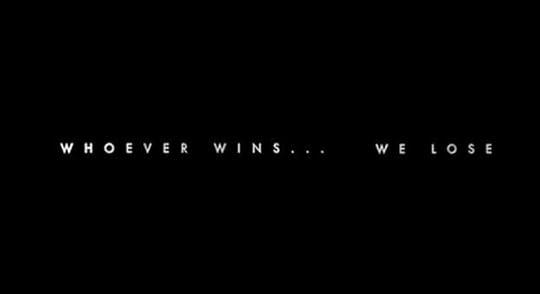Daniel Haight's Blog
January 17, 2018
Hello world!
Welcome to WordPress. This is your first post. Edit or delete it, then start blogging!
August 17, 2016
Scary Predictions Already Coming True in Iron Mountain – II
As I said last time, sometimes, truth and fiction slam into each other. Just as I describe in my books, the world is becoming a scary place.
An active shooter – our new code word for ‘guy shooting randomly at people’ – is on the loose up in Humboldt County, ground zero for the last chunk of Iron Mountain. As of this writing, they’re trying to negotiate him out. For the sake of the town of McKinleyville, friends, family and law enforcement, I hope this ends safely.

Professional Storytelling: Getting Paid – Part One
When authors and publishers fight, nobody wins.
I read this this nasty exchange between Nick Mamatas and The Offing Magazine a couple of weeks ago. It reminded me of the bitter discussions I’ve had between other publishers, promoters, social media experts and magazines in my pursuit of artistic excellence. Making the transition from amateur to professional is difficult in any business, but it seems getting paid for written work is weirder than most.
“How do I get money for this?” is the question on every author’s mind.
I wrote a poem, could I get paid for it?
I wrote a short story, how do I sell it?
I wrote a novel, how do I find a book agent?
 We’re all traveling the same path of ‘pay me for my art.’ To my mind, nothing is more soul-killing to a creative person than that awkward moment when they screw their face up at you and go “You … you expect me to pay for this?” Meanwhile, Bill O’Reilly ghostwrites another non-fiction book about why you’re an idiot and it’s a New York Times’ Best Seller before the month is out.
We’re all traveling the same path of ‘pay me for my art.’ To my mind, nothing is more soul-killing to a creative person than that awkward moment when they screw their face up at you and go “You … you expect me to pay for this?” Meanwhile, Bill O’Reilly ghostwrites another non-fiction book about why you’re an idiot and it’s a New York Times’ Best Seller before the month is out.
People ask why we drink.
A few time-worn truths have manifested themselves to me after years of work. If you’re going to write stories for a living, you better understand how to get paid for your work. This blog post is about some of the things I learned about getting paid to write. It’ll help you avoid getting screwed and avoid screwing yourself.
When I wrote Flotilla and published it via Createspace, I started learning a few things. I wanted to understand what would make people want to buy my book, so it was necessary to understand what made people buy any book. What would make them buy Flotilla? How could I get paid for my work? Everything was trial-and-error. Along the way, I was introduced to many, many snake-oil salesmen who make their living out doing one simple thing: Bilking authors out of ‘service fees’ for book promotion. Pay me to Tweet about your book! Pay me to take your book to the Berlin Book Fair! Pay me to build a marketing program for you!
It quickly became apparent that I could easily throw a hundred thousand dollars at this problem with nothing to show for it. I became enraged – like Nick Mamatas did above – at everyone who suggested I work with them for ‘exposure’ or that couldn’t explain how they would provide a return on the investment they wanted me to make. I’m a talented author! I deserve money for my work! It led to some awkward arguments. In the end, no one was convinced and everyone left the table hating each other.
That doesn’t work, either.
In the end, I came to a simple conclusion: Nobody really knows how this all works. I’ve had famous (yes, that guy you’re thinking of and yes, that guy, too) ask me about how to successfully promote new stories. Without a publishing house to manage the process, without a huge marketing budget, we’re all suspicious natives rubbing sticks together, hoping fire comes out.
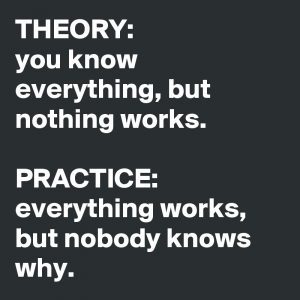 How does Twitter work? How do you do a book launch? There are a ton of author forums and subreddits, but there has yet to be a magical ‘one size fits all’ solution to writing and selling a perfect novel.
How does Twitter work? How do you do a book launch? There are a ton of author forums and subreddits, but there has yet to be a magical ‘one size fits all’ solution to writing and selling a perfect novel.
Professional publishers are struggling with this as well. I was talking with a friend who used to work in the publishing business and he told me a vital truth. I’ll protect his identity for reasons that will shortly become clear.
“Books become big because editors decide to get behind them,” he told me over breakfast. “I know (so-and-so), who originally published Bret Easton Ellis. Even though most people think Ellis’ work is horrible, he decided that it was important and published it. It’s the same with many genres, chick-lit, LGBT-lit … they all exist because an established editor or influential publisher decided to throw their weight behind them.”
“So they’re the gatekeepers,” I said.
“Bingo.”
Not a startling revelation, perhaps, but it goes to show that it isn’t just about being a talented writer. The cliche of an underknown author writing something so beautiful that the world of its own volition propels them into the stratosphere is just that: a cliche. Nobody discovers anything. Writing is a hard buck. As it ever has been, according to Ben Bova. ‘Writing the best book you can and people will find it’ is one of the worst pieces of book-business advice an author can hear. It doesn’t work that way. I wish that it did, and so do many other authors, but that’s not the landscape of publishing in 2016.
So yeah, let’s talk about getting paid as a writer. Let’s tear this thing open like an old engine, find out how the parts work and then put it back together so it runs for us. This isn’t going to be a single blog post, either. The topic is *much* too broad. Instead, I’m going to break this up into a multi-parter. Here are some of the bullet points I plan to cover:
Get the Audience First
Ask Questions Up Front …
… But Don’t Pick Fights
Live to Fight Another Day
Look, I get it. Selling your creativity for money is a comically arbitrary, dehumanizing process. Don’t get sucked into the madness. Laugh about it, save it for a funny story at a Con. Whatever you do, don’t let it embitter you. Don’t post an angry diatribe about it, the odds of it making things better for you are worse than successfully navigating an asteroid field in the Millennium Falcon.
I’m closing on a thousand words for this blog post, so let me wrap it up by saying “let’s discover the answers together.” That’s all we really can do. I hate snotty blog posts that reduce complex topics down to glib platitudes. This won’t be that kind of discussion. I wish the answer was easier, but until then, I have a novel to write.
August 10, 2016
Professional Storytelling: How Do You Handle Violence in a Story?
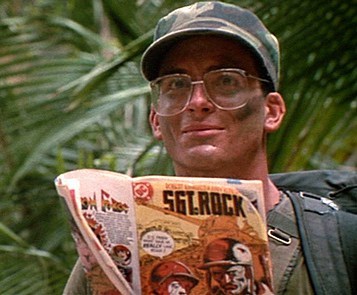 Are you writing a book with some action in it? Well, chances are that you’ve had to write a scene with some violence in it. How do you handle that?
Are you writing a book with some action in it? Well, chances are that you’ve had to write a scene with some violence in it. How do you handle that?
I’m like you – I want to read or write interesting stories. At the same time, I want to stay on the right side of the line. A story’s violence is capable of taking you to a very dark place. Don’t believe me? Go read a Cormack McCarthy novel (and remember, you’ve been warned). Violence for violence’s sake, violence to shock … that’s not really what I’m about. So how do you tell a story that includes with authenticity and integrity?
It turns out, that this guy (->) might have the answer:
No, I’m serious! Shane Black was an actor and he’s also written and directed. You’ve seen his movies if you’ve seen Iron Man 3 or Lethal Weapon. I ran across this interesting discussion about Shane Black and how he handles ‘movie violence.’ Give it a look-see for some interesting insights on how to use violence in a story.
As the man said, ‘If we’ve experienced it, we know that violence can be indiscriminate and deeply personal at the same time. Violence done right in these movies, violence as a plot element or as an exhibition of character, awkward violence, is violence respected.’
So I thought that was an interesting idea to contemplate. Stories with action will always include violence in some form. The question of how to handle it, how to wield that tool correctly to move your story forward, is being answered in some creative and insightful ways by many talented artists. Posting this here to inform you, and for my future reference.
August 8, 2016
Iron Mountain Production Update – First Round of Edits Complete!
 It’s done, it’s finally done! Been working on this for weeks – the first round of edits are done on the new edition of Iron Mountain. They’ll go out tonight for review by the Iron Mountain Beta Readers Group. This brings us one step closer to releasing the new edition of Iron Mountain in November.
It’s done, it’s finally done! Been working on this for weeks – the first round of edits are done on the new edition of Iron Mountain. They’ll go out tonight for review by the Iron Mountain Beta Readers Group. This brings us one step closer to releasing the new edition of Iron Mountain in November.
Meantime, LOTS OF STUFF HAPPENING …
Here are some of the behind-the-scenes work I’m doing in preparation for the release of Iron Mountain:
New book cover artist competition begins today over at 99Designs.com – You’re welcome to participate!
New rounds of feedback are coming in from the Beta Readers – thank you, guys! You’re amazing – can’t wait to fold your thoughts and opinions into the next draft!
Scheduling appearances on podcasts for a podcast tour – I’ll post new dates when I have them
Pulling together video / audio / visual elements for the new book trailer – can’t wait to see what you think!
Thank you for sharing this ride with me – it’s been a fun and fulfilling experience.
~ Dan
August 4, 2016
Scary Predictions Already Coming True in Iron Mountain
Whoa.
 I know I said the Pac Fish Series isn’t political, but I read the newspaper like everyone else. The current tone of American politics is becoming eerily reminiscent of a central theme in my upcoming book, Iron Mountain. Here’s what I’m talking about: According to this Vox article, the gravitational center of the Republican Party is white nationalism. White nationalism, as you know, is a central tenant of insurgent groups like the KKK. It plays a strong role in the motivations of the antagonists you’ll meet in Iron Mountain when it’s released later this year.
I know I said the Pac Fish Series isn’t political, but I read the newspaper like everyone else. The current tone of American politics is becoming eerily reminiscent of a central theme in my upcoming book, Iron Mountain. Here’s what I’m talking about: According to this Vox article, the gravitational center of the Republican Party is white nationalism. White nationalism, as you know, is a central tenant of insurgent groups like the KKK. It plays a strong role in the motivations of the antagonists you’ll meet in Iron Mountain when it’s released later this year.
I never planned for the future to happen this way when I originally wrote the plot outline of Iron Mountain. I looked at the current state of militia groups in America, realized that many of them had roots in racist ideology and let that inform the types of characters I created. Little did I know that this would become a national topic of conversation.
The prediction, though, is rapidly becoming true: “Trump’s politics of aggrieved white nationalism — labeling black people criminals, Latinos rapists, and Muslims terrorists — succeeded because the party’s voting base was made up of the people who once opposed civil rights,” according to Vox. Imagine an armed group of people who feel that way and you have a pretty good idea of who Jim is up against in Iron Mountain.
This development in current events is sobering for me. Sometimes, truth and fiction slam into each other. Just as I describe in my books, the world is becoming a scary place. Scarier by the day. As Jim is quickly learning, sometimes the only thing you can do is try to be a good person who makes the best possible choice with the information he has. It’s not about politics, it’s not about creed, it’s not about ideologies.
Come along for the ride. It’s about to get real.
August 2, 2016
The Wacky World of Seasteading – Part One

Apologies in advance for the wall of text. This post is the first in a series about seasteading and I’m posting it for a couple of reasons:
‘Seasteading’ and ocean-based communities are a central idea in the Pac Fish series
I got what I consider to be the most well-packed resource of information about the topic that I’ve ever seen.
If you’ve ever been curious about communities on the ocean, this post is for you. I learned a lot, even though I’ve researched this topic in depth for book research. Now I’m passing it along to you.
Here’s how this all started. You might have heard the recent news: Pete Thiel is no longer pursuing his vision of seasteading – creating autonomous governments on ocean-based communities. That’s significant to me, since the Pac Fish series is pretty much about people who live on those types of communities, although it’s rather different from Mr. Thiel’s vision.
So people were talking about this article on Reddit. That’s when I ran across Eric Hunting’s comments and my ears perked up. I read his post and thought, ‘wow, dude knows what he’s talking about.’ No matter what, you should read his post because he references Libertatia, which figures heavily into the new Uncharted 4 game by Playstation that I’m playing right now.
Anyway. Because I’m curious, I sent him a message:
Greetings!
I’m Dan and I write a sci-fi series about a kid who lives in a semi-autonomous ocean-based community. I talk about a lot of the same issues you discussed, but through the lens of a slacker teenager who doesn’t really understand what’s going on. I’d love to get your take on it – do you think we could talk?
Best wishes, Dan
Thus began a long-form discussion about Flotilla, seasteading and why it hasn’t gone mainstream yet. As far as I can tell, most media surrounding seasteading is either slanted toward ‘This is why we should seastead immediately’ or ‘look at the dumb weirdos who want to live on the ocean.’ There doesn’t seem to be a lot of objective ‘here’s what you should know about seasteading’-type information.
Until now.
I found the conversation incredibly insightful from the perspective of seasteading and you may as well, if you’re into that kind of thing. Let’s spend a few blog posts now talking about the science of seasteading with a guy who has actually thought this through. Later, we’ll talk about how he feels about Flotilla and the Pac Fish series. I think you’ll enjoy that, too!

So Who is Eric Hunting and Does He Know What He’s Talking About?
I started out by asking Eric, “What did or do you do with seasteading these days? I have a cordial but not close relationship with seasteading.org and I’m curious as to what your relationship with them is.” Here’s his reply:
I was long involved in the First Millennial Foundation/Living Universe Foundation and eventually became its last president. The FMF was formed to pursue the space development scheme proposed by futurist Marshal Savage in the book The Millennial Project. Perhaps the last of the ‘classic’ space futurist books.
 One of TMP’s most unique features as a space development scheme was a phase of marine settlement development called Aquarius ( http://radio-weblogs.com/0119080/images/Gallery/aquarius1.jpg ) centered on the creation of an equatorial mid-ocean marine colony that would be host of Ocean Thermal Energy Conversion plants, industrial scale mariculture, and serve as an integral part of a space transportation infrastructure. This concept emerged at about the same time in the late 1980s as several competing marine colonization concepts; Seasteading (proposed by west coast Libertarians), Oceania (proposed by Floridian Libertarians) ( http://radio-weblogs.com/0119080/images/Gallery/oceania1.jpg ), Autopia Ampere (proposed by the mercurial and eccentric inventor Dr. Wolf Hilbertz, which was partly an inspiration for the original Aquarius concept)( http://1.bp.blogspot.com/-YoX7Z9Lc7Ns/UamOLoyDdMI/AAAAAAAAA1U/ViEJGJB0bOc/s1600/AutopiaAmpere.jpg ), New Utopia or Nutopia (proposed by the eccentric entrepreneur Prince Lazarus Long and his followers in the Extropian community, which would evolve into today’s Transhumanist community)( http://www.new-utopia.com/s10.jpg ), and Nexus. (proposed by the organic architecture guru Eugene Tsui)( http://www.eugenetsui.com/slideshows/protocols/large/22D1740D-C559-439A-A079.jpg ) Also relating to this was Jacque Fresco’s Florida based Venus Project, which featured marine development ( http://antimatrix.org/Convert/Books/Jacque_Fresco_Designing_the_Future/img/Jacque%20Fresco%20-%20Designing%20the%20Future-73.jpg ) but focused chiefly on its planned land city concept. (its marine settlement designs lifted for use in Disneyworld’s Horizons exhibit–not that Fresco himself didn’t lift a lot of concepts from the Metabolist design movement…)
One of TMP’s most unique features as a space development scheme was a phase of marine settlement development called Aquarius ( http://radio-weblogs.com/0119080/images/Gallery/aquarius1.jpg ) centered on the creation of an equatorial mid-ocean marine colony that would be host of Ocean Thermal Energy Conversion plants, industrial scale mariculture, and serve as an integral part of a space transportation infrastructure. This concept emerged at about the same time in the late 1980s as several competing marine colonization concepts; Seasteading (proposed by west coast Libertarians), Oceania (proposed by Floridian Libertarians) ( http://radio-weblogs.com/0119080/images/Gallery/oceania1.jpg ), Autopia Ampere (proposed by the mercurial and eccentric inventor Dr. Wolf Hilbertz, which was partly an inspiration for the original Aquarius concept)( http://1.bp.blogspot.com/-YoX7Z9Lc7Ns/UamOLoyDdMI/AAAAAAAAA1U/ViEJGJB0bOc/s1600/AutopiaAmpere.jpg ), New Utopia or Nutopia (proposed by the eccentric entrepreneur Prince Lazarus Long and his followers in the Extropian community, which would evolve into today’s Transhumanist community)( http://www.new-utopia.com/s10.jpg ), and Nexus. (proposed by the organic architecture guru Eugene Tsui)( http://www.eugenetsui.com/slideshows/protocols/large/22D1740D-C559-439A-A079.jpg ) Also relating to this was Jacque Fresco’s Florida based Venus Project, which featured marine development ( http://antimatrix.org/Convert/Books/Jacque_Fresco_Designing_the_Future/img/Jacque%20Fresco%20-%20Designing%20the%20Future-73.jpg ) but focused chiefly on its planned land city concept. (its marine settlement designs lifted for use in Disneyworld’s Horizons exhibit–not that Fresco himself didn’t lift a lot of concepts from the Metabolist design movement…)
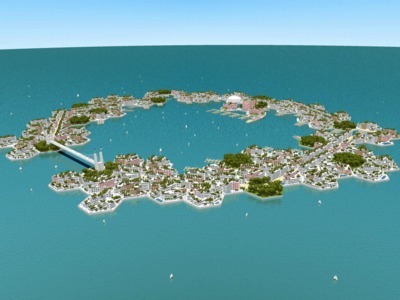 There was no real rivalry among these concepts and their communities and they shared and communicated various ideas and supporters. Thus there were supporters of Seasteading on the periphery of the FMF. This brought me some peripheral involvement with the Seasteaders as they adopted some concepts I had been developing for TMP. Originally, the Seasteading community was focused on a crude concept of marine homesteading very similar to that of Richart Sowa’s Spiral Island ( http://www.sensationslife.in/sites/default/files/u15/spiral-artificial-island.jpg ) based on repurposed plastic waste, and thus dangerously non-seaworthy. At the time I was working on the logistics problems with Marshal Savage’s original Aquarius concept which had become a serous stumbling-block for its community. Savage’s original proposal was based on a static float structural system with structures cultured in water using the Hilbertz electrolytic sea accretion process. But duplicating Hilbertz’ purported results with the technique proved impossible as he had greatly exaggerated, if not fabricated, his research data. The reliance on static float structures also proved to be a critical problem as it compelled the prefabrication of a vast breakwater structure whose own creation compelled the development of a vast network of coastal eco-village communities that proved untenable as they required some of the most remote or expensive coastal real estate in the world. Dubbed Aquarius Rising, these communities were to be started with a prototype in the Maldives called Anlagen–a location largely inaccessible to most of the FMF community even as a vacation venue. The ‘pharaonic’ nature of the Aquarius phase and the decades of development it demanded grew into a major bone of contention among space cadets who always want their seat in Captain Kirk’s chair yesterday.
There was no real rivalry among these concepts and their communities and they shared and communicated various ideas and supporters. Thus there were supporters of Seasteading on the periphery of the FMF. This brought me some peripheral involvement with the Seasteaders as they adopted some concepts I had been developing for TMP. Originally, the Seasteading community was focused on a crude concept of marine homesteading very similar to that of Richart Sowa’s Spiral Island ( http://www.sensationslife.in/sites/default/files/u15/spiral-artificial-island.jpg ) based on repurposed plastic waste, and thus dangerously non-seaworthy. At the time I was working on the logistics problems with Marshal Savage’s original Aquarius concept which had become a serous stumbling-block for its community. Savage’s original proposal was based on a static float structural system with structures cultured in water using the Hilbertz electrolytic sea accretion process. But duplicating Hilbertz’ purported results with the technique proved impossible as he had greatly exaggerated, if not fabricated, his research data. The reliance on static float structures also proved to be a critical problem as it compelled the prefabrication of a vast breakwater structure whose own creation compelled the development of a vast network of coastal eco-village communities that proved untenable as they required some of the most remote or expensive coastal real estate in the world. Dubbed Aquarius Rising, these communities were to be started with a prototype in the Maldives called Anlagen–a location largely inaccessible to most of the FMF community even as a vacation venue. The ‘pharaonic’ nature of the Aquarius phase and the decades of development it demanded grew into a major bone of contention among space cadets who always want their seat in Captain Kirk’s chair yesterday.
I proposed alternative structures based on more conventional, if still potentially marine-sourced, concrete and geopolymer materials using a recently developed structural system called Pneumatically Stabilized Platforms being marketed by the firm Float Inc. This approach eliminated the need for a separate breakwater structure allowing for incremental settlement development in places more readily accessible to middle-class Americans. I suggested a new Anlagen/Aquarius Rising concept based on a near-shore floating ‘seeds’ that could grow directly into full scale colonies, which I liked to jokingly call Hyokkori Hyoutanjima–the name of an iconic Japanese puppet show whose premise was a wandering floating island. I also proposed the FMF develop some simple structures based on the ‘spar buoy’ or ‘sea tower’ structure as a way of getting their feet wet, so to speak, in marine construction. Based on the same principles as the well known FLIP research vessel, spar buoys are the smallest and simplest self-stable open sea marine structures and, though I did not consider them suited to permanent settlement development (because getting on and off them is inconvenient and it’s not possible to repair and replicate them from aboard them), they have many useful applications as science platforms, telecommunications platforms, energy facilities, down-range telemetry platforms, marine-launched rocket support structures, mobile mariculture facilities, and novel hotel and vacation housing structures. In fact, the famous oceanographer Bob Ballard had also explored a business based on using these for vacation homes. I proposed starting with a demonstration project based on a tent-like floating variation of Buckminster Fuller’s early cable-stayed 4D/Dymaxion House ( http://davidszondy.com/future/Living/dynamast02.jpg ) on a spar pylon.

The Seasteaders soon adopted both these concepts, though at first they were much more interested in the spar buoy concept than PSPs, which they seemed reluctant toward because those structures compelled a large minimum starting scale. For a long time the spar structure was the icon of the Seasteading concept. For some years they did give me credit for these concepts on their web sites and I corresponded with some of their members, though I was never invited to join their group because I’ve always been rather outspoken against the Randian faction of Libertarianism and a proponent of much more communitarian sea and space development strategies. In recent years the Seasteaders have shifted in favor of progressively large communal structures akin to the PSP and sharing features common to Aquarius and Oceania designs, slowly coming to realize the logistics issues of marine living and the large economies of scale of their likely solutions.
None of the marine settlement concepts of the late ’80s were ever able to achieve critical mass and most have not survived to the present. In many cases, their advocacy groups collapsed from within due to interpersonal conflicts Libertarian groups are prone to. Such was the case with Oceania which self-destructed in conflict over the drafting of a community constitution. Nutopia suffered from the eccentricities of its Extropian Libertarian founders and Lazarus Long’s somewhat dubious business arrangements. Autopia Ampere suffered from its inventor’s  own tempestuous personality and died with him. Nexus, with its zoomorphic organic design, was just too fanciful and strange to attract much interest. (organic design is probably the most polarizing of aesthetic movements) Once the most promising and vital of the lot, Aquarius, and the larger TMP, lost its early momentum with the abandonment by its founder over a never explained personal conflict and, despite my own decades of effort, never could overcome the space advocacy community’s inability to grasp the sea’s role in space development or the point to cultural and intentional community development, as well the movement’s more general decline toward a retrofuturist cargo cult.
own tempestuous personality and died with him. Nexus, with its zoomorphic organic design, was just too fanciful and strange to attract much interest. (organic design is probably the most polarizing of aesthetic movements) Once the most promising and vital of the lot, Aquarius, and the larger TMP, lost its early momentum with the abandonment by its founder over a never explained personal conflict and, despite my own decades of effort, never could overcome the space advocacy community’s inability to grasp the sea’s role in space development or the point to cultural and intentional community development, as well the movement’s more general decline toward a retrofuturist cargo cult.
So that’s the story of my involvement with the Seasteaders. Hope you found it of interest. I’d be happy to answer any other questions.
Boom!
Mind. Blown. I learned more from this guy about the history of seasteading in one email than I have in all my hours of research on the Internet. Seasteading covers many topics including technology, transhumanism, and politics. As with many other parts of the ocean, the real story is what happens below the surface.
So, cool discussion about seasteading but we’re only getting started. Stay tuned for Part II, in which we start plumbing the depths of other practical challenges that seasteading has tried to overcome. Hope you found this useful – I certainly did!
To be Continued …
Thanks for hanging out with me today. If you like seasteading and science fiction that takes you seriously, I hope you’ll give my first book Flotilla a shot. I’m working on its sequel right now.
Best wishes,
Dan
July 25, 2016
Why You Love ‘Stranger Things’
Stranger Things. I was hooked in sixty seconds – you probably were, too. Let me stop talking about me and starting talking about this show because it’s awesome. It put me back on production of Iron Mountain while I binge-watched the entire first season. Stranger Things is an indication that the renaissance of science fiction is underway. Let’s talk about why.
As a person who really cares about science fiction, I’ve felt like I’ve been raging against the machine too long. Science fiction has been failing us as fans for quite some time. No actual science in my sci-fi, franchises spoiled by reboots, burying us with graphics and starving us on stories – this has been a leitmotif of FlotillaOnline for five or six years now. It now turns out that I’m not the only one crying out for a return to sci-fi with a pulse. Stranger Things is on Netflix and it’s a glorious return to the science fiction I grew up on as a kid.

But what makes Stranger Things work so well? I’ve been thinking about this ever since Force Awakens came out, because J.J. Abrams captured something with Episode 7 that had been missing in Episodes 1-3. The animated movie Iron Giant captured it. Firefly captured it. Super 8 captured it. But what is it? I jotted down some ideas … see what you think:

We’re Looking for Authentic Experiences
I think Charlie Chaplin’s quote ‘More than machinery we need humanity‘ applies to science fiction. We need more than toys and computer graphics. We need to feel connected. We need to feel like the world being described is real. Only then can we immerse ourselves in that science fiction story.
I come by this opinion honestly. All of my favorite science fiction went out of its way to make me feel connected to the story and the characters. The unwritten rule about Star Wars was that it was successful because of George Lucas’ devotion to depicting the gritty realism of a space-faring civilization. Forget the spotless decks of the Enterprise, we want our planets filled with dangerous, weird-looking aliens that embody all the physical and emotional weirdness of humanity. George Lucas gave us that in spades.
Not only that, George Lucas pioneered new areas of filmmaking by the way he communicated emotional authenticity in films like ‘American Graffiti.’ In a world where actors were well-scrubbed, rehearsed and planned, Lucas blew our minds with an unsanitized universe filled with fart jokes, lecherous teachers, melting popsicles, and teen romance all in one film. Unconvinced? Go watch American Graffiti again. Two hours later, you’ll understand why people consider it one of the one hundred best movies ever made.

Not resting on his laurels, George Lucas took that idea of communicating emotional authenticity to science fiction. He built this rich, imaginative universe and populated it with myth, action, tragedy and comedy. His protagonists argued with each other. Heroes came with baggage. Good guys had bad problems. Plus, Star Wars reminded us that we needed a simple story with where good guys get the girl while bad guys get justice. It scratched an itch in our aching post-Vietnam-War-post-Watergate-era hearts, and we made it a part of our lives.
George Lucas’ legacy is how he taught us to visually communicate emotional authenticity.
It’s not just about Star Wars, though. George Lucas and Steven Spielberg have always had a knack for making their stories look and feel legitimate. We loved Close Encounters of the Third Kind because we felt Roy Neary’s emotions as an average everyman, suddenly caught up in extraordinary circumstances.
We were sucked into the universe of Indiana Jones because he felt like a credible character.
Is that important? Absolutely. Here, I’ll prove it to you. Remember those ‘Allan Quatermain’ movies that came out after Raiders of the Lost Ark? You don’t? I rest my case. In case you didn’t know, they launched an Indiana Jones-like franchise to compete with Raiders of the Lost Ark. It was based on the original novels, they featured Richard Chamberlain and they’re excruciating. They’re campy, they’re unintentionally silly. Sharon Stone received a Razzie for being in them. The Quartermain movies are a handshake away from appearing on Mystery Science Theatre 3000, that’s how bad they are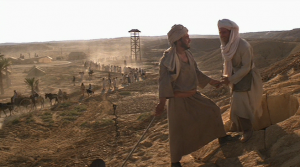 .
.
By contrast, Indiana Jones’ appeal survived over several decades. The Quartermain movies slipped into obscurity and for a very simple reason: they had an utter lack of emotional authenticity. Spielberg knows how to capture that on film. So does George Lucas. Unsurprisingly, both men had a hand in creating Raiders of the Lost Ark.
Want another example? Here: remember Iron Giant? I just found out it’s coming out on Blu-Ray in a few weeks so I’ll be getting that. Who could imagine that a movie about a kid (named Hogarth Hughes, the most unlikely protagonist name ever) and his giant robot friend could touch so many lives? Even before the Iron Giant shows up, we’re treated to a ringside seat of Hogarth’s life dealing with the baggage of being the smallest kid in his class and living with his single-parent mom. When the Iron Giant shows up and changes his life, we’re already cheering for the kid. He deserves a break. He needs a friend. We’re happy when he finds both.

The good news is that other people understand how valuable this is. You’re seeing that authenticity coming back in J.J. Abrams’ films and shows. You’re seeing it in shows like Firefly. Mal Reynolds is a man looking for a cause after the loss of the Independents. He’s found it, for better or worse, in keeping River Tam away from the Alliance. Being a hero in the Firefly universe means being a bad guy … navigating the moral ambiguities of the universe while retaining a sense of humor about the madness. Anyone who has suffered loss can relate to Mal and the crew of the Serenity.

The kids in Super 8, like the kids in Stranger Things, are geeky, weird and unsure of themselves. They’re three-dimensional characters that go out of their way to challenge your expectations. Everyone wants to feel an emotional connection to the characters and the story. Shows like Firefly and movies like The Iron Giant, Super 8 are giving it to them.
Stranger Things is doing this now, too.
How Stranger Things Grabs You
From the very first scenes, you love these kids that the story will revolve around. They’re nerdy and weird, they argue over their D&D campaigns and their parents are ignoring them in the basement for hours on end. Some of them live in semi-stable homes while others scramble to hide their chaotic family life from everyone else. They show little details about life in the 80s that even I, the kid from the 80s that I am, had forgotten. Rotary phones packed in wads of brown wrapping paper, Sally Jesse Raphael glasses, mom jeans and coordinated wallpaper/drape schemes from the darkest corners of Better Homes and Gardens. It doesn’t stop there. People drive old Ford Pintos, Galaxies and sun-faded VW Rabbits. Kids live in Mid-western split levels, playing D&D in basements filled with old nasty pile carpet and cheap wood panelling.
In every aspect of the show, everything feels like real things happening to real people. When the spooky sci-fi stuff starts to happen, you feel every square inch of it because you’ve already been visually introduced to a universe that feels real. Just as Disneyland creates an immersive universe through the careful cultivation of verisimilitude, Stranger Things recreates the verisimilitude of formative retro sci-fi, down to the digitally-added scratches in the main titles, just like you’d see in an old 35mm print of a film. They put those in there!
It doesn’t stop there: The title credits emulate the old fade-in-fade-out techniques of a million eighties flicks. They put that in there! Digital effects are used sparingly, practical effects everywhere else. Everything about the show screams “We love those old movies, just like you do – now sit back and relax. You’re gonna love this.”
And we do.
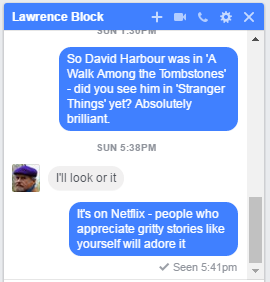 Veteran actors like Matthew Modine and Winona Ryder shine along with the tween cast, never chewing the scenery and never compromising their roles. Most actors and actresses are relatively unknown to mainstream audiences but I suspect that will change after this show.
Veteran actors like Matthew Modine and Winona Ryder shine along with the tween cast, never chewing the scenery and never compromising their roles. Most actors and actresses are relatively unknown to mainstream audiences but I suspect that will change after this show.
Actually, it’s funny – I told Lawrence Block about the show. I thought it’d interest him because one of the co-stars, David Harbour, was in a movie called ‘A Walk Among the Tombstones,’ based on the Lawrence Block Matt Scudder series before Stranger Things. Even Lawrence Block had no idea that David Harbour was in the show!
Everyone is here to deliver their A-Game and they do. I loved each of the kids’ characters and I’m sure each actor has a long and bright career in front of them. So I finished watching the last episode of Season One today. Me and the Rugrat applauded when the end credits rolled. Maybe you did too.
Why We Love It
Although I love a good popcorn flick, there’s an uncanny valley that exists between the goofy plotlines of mainstream scifi and our expectations. It almost feels like Hollywood thinks we’re nothing more than walking ATM machines. Sadly, we’ve been falling for it. Now it’s time for us to reclaim our role as the owners of science fiction. We need stories! We need characters! We love sci-fi that takes us as seriously as we take science fiction! We’ve been waiting way, waaay too long for Hollywood to deliver the goods. Now Netflix is and there’s no looking back.
Other people are, too. I’m proud to be a part of the science fiction that respects its fans. I used to scream about the lack of depth of the sci-fi I saw in the late 90s and early 2000s. A part of me said “well, hotshot, if you think they suck then make some of your own.” I started writing short stories and then I moved onto novels.
In every aspect of what I do, I want to extend that same respect toward my readers that shows like Stranger Things extends to us. They respect us! They don’t try to be perfect. Instead, they’re deliciously authentic. They use real-life stories like MKUltra to draw us into a plausible scenario involving transdimensional travel, government conspiracy and spooky monsters. Along the way, they populate the universe with damaged people who must overcome their baggage in order to be the hero that their kids deserve. Stranger Things is innovative in that it revisits old story archetypes in a fresh way that lets you come back to old stories without feeling disappointed. True, there are elements of the story that reminded me of the ‘Little Girl Lost’ episode of Twilight Zone and The Philadelphia Experiment without anyone going ‘Rip-off!’
I love it! I do the same thing with my books so I can’t help but admire them and applaud them. It takes blood, sweat and tears to make sci-fi this rich and imaginative. ‘Stranger Things’ raises the bar on heartfelt, innovative storytelling and I salute them for it! 
July 21, 2016
This is a Politics-Free Zone
Just saw that Pete Thiel is in the news again with this election cycle.
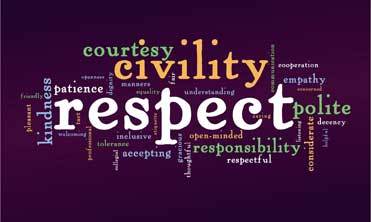 As you may know, Mr. Thiel is well-known for his political views and connection to seasteading. Therefore, I wanted to reiterate something I said before about the complete disconnection between my stories and any political discussion. In fact, it’s one of the reasons I stay away from any topics regarding current events. At one point, I had a blog post talking about this, but I grubbed around WordPress, and I couldn’t find it. So let me restate a key fact of Flotilla and the rest of the Pac Fish series.
As you may know, Mr. Thiel is well-known for his political views and connection to seasteading. Therefore, I wanted to reiterate something I said before about the complete disconnection between my stories and any political discussion. In fact, it’s one of the reasons I stay away from any topics regarding current events. At one point, I had a blog post talking about this, but I grubbed around WordPress, and I couldn’t find it. So let me restate a key fact of Flotilla and the rest of the Pac Fish series.
Survival is about Humanity, not Politics
I envisioned a future beyond our current political squabbles, one where people still have their own struggles, hopes and dreams. It would be dishonest of me to speak of a human future where only one perspective, only one school of thought existed. Our fuzzy, messy clashes of humanity will always be interesting, so I wrote about how that might play out in a futuristic context. I picked a technology that has proved to be a hotbed of politics for some people, but political discussion isn’t who or what I am. It isn’t what my books are about, either.
Now having written this statement of purpose, I hope to return to matters of greater importance.
The Nicest Thing My Mailing List Ever Said to Me
Got a nice email back from Team Flotilla that left me with warm fuzzies and I want to pass it along to you. After I reached out to everyone to participate in the Beta Readers program, one member said this:
Good afternoon Dan,
Finding good readers is always a challenge. I would be happy to help you out as a beta reader — for whatever my input and opinion are worth.
As a side note, I have been quite impressed with how you’ve handled your emails. I have felt connected to your community, engaged in your creative process, and never said, “Great, another email from Haight. Where’s the delete button?” You’ve really nailed the balance between engagement and spam. Well done. I wish you continued success.
Been sitting like this all day …

Now please excuse me, I have a novel to edit.


